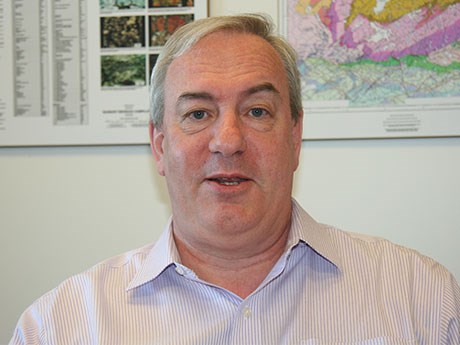Pearce Element Ratio Analysis goes mainstream
A software development project funded by the Centre for Excellence in Mining Innovation (CEMI) in Sudbury is making a highly complex and underutilized mathematical technique for finding orebodies more accessible to earth science students and geologists.
Developed by Queen’s University professor Thomas H. Pearce, the so-called Pearce Element Ratio Analysis technique “allows you to analyze the changes that took place to mineralogy over time,” explained CEMI president and CEO Doug Morrison.
“So, if a certain set of minerals was altered by pressure and temperature and then altered again, the Pearce Element Ratio technique and the (related) General Element Ratio technique allow you to understand what that alteration process was and essentially reverse it.
“All you see in the present time is the minerals the way they are now,” but by reversing the process, “you can actually go back to the elements the way they were in the beginning.”
In the Sudbury Basin, for example, “we know that the copper zones are significantly different from the nickel zones,” said Morrison. “With this technique, we can figure out why those deposits are where they are, so it’s a technique to better understand the distribution of minerals that we have in the Basin, especially those that have been highly altered over the period.”
Dr. Cliff Stanley, a geology professor at Acadia University in Nova Scotia, wrote software to apply the technique some time ago, but it was written in Fortran, a programming language that is no longer in widespread use.
CEMI hired a student to rewrite it in a more accessible language, “so it’s all nice and simple and makes it very easy to use,” said Morrison.
The CEMI-funded software called Merlin was released at the Canadian Institute of Mining and Metallurgy’s convention in Toronto in May and will be available for a nominal charge through CEMI.
The branding of the software comes from an extension of the Pearce Element Ratio technique called Molar Element Ratio (MER) analysis.
“We have traditionally used what people would consider to be more sophisticated analytical techniques for looking at minerals the way they are and trying to infer how they got there, but we think this particular approach is actually a superior way to walk your way backwards in time to find out what the original deposits were like,” said Morrison.
“We start with data (characterizing current mineralogy) and without making any assumptions, the software allows you to begin to see how the mineralogy has evolved from one step to the next, with each step being a physical alteration caused by geological forces. This tells you what the mineralogy was like in the beginning, and the way the mineralogy was in the beginning tends to help you decide where you should go to look for those original deposits.”



.jpg;w=120;h=80;mode=crop)